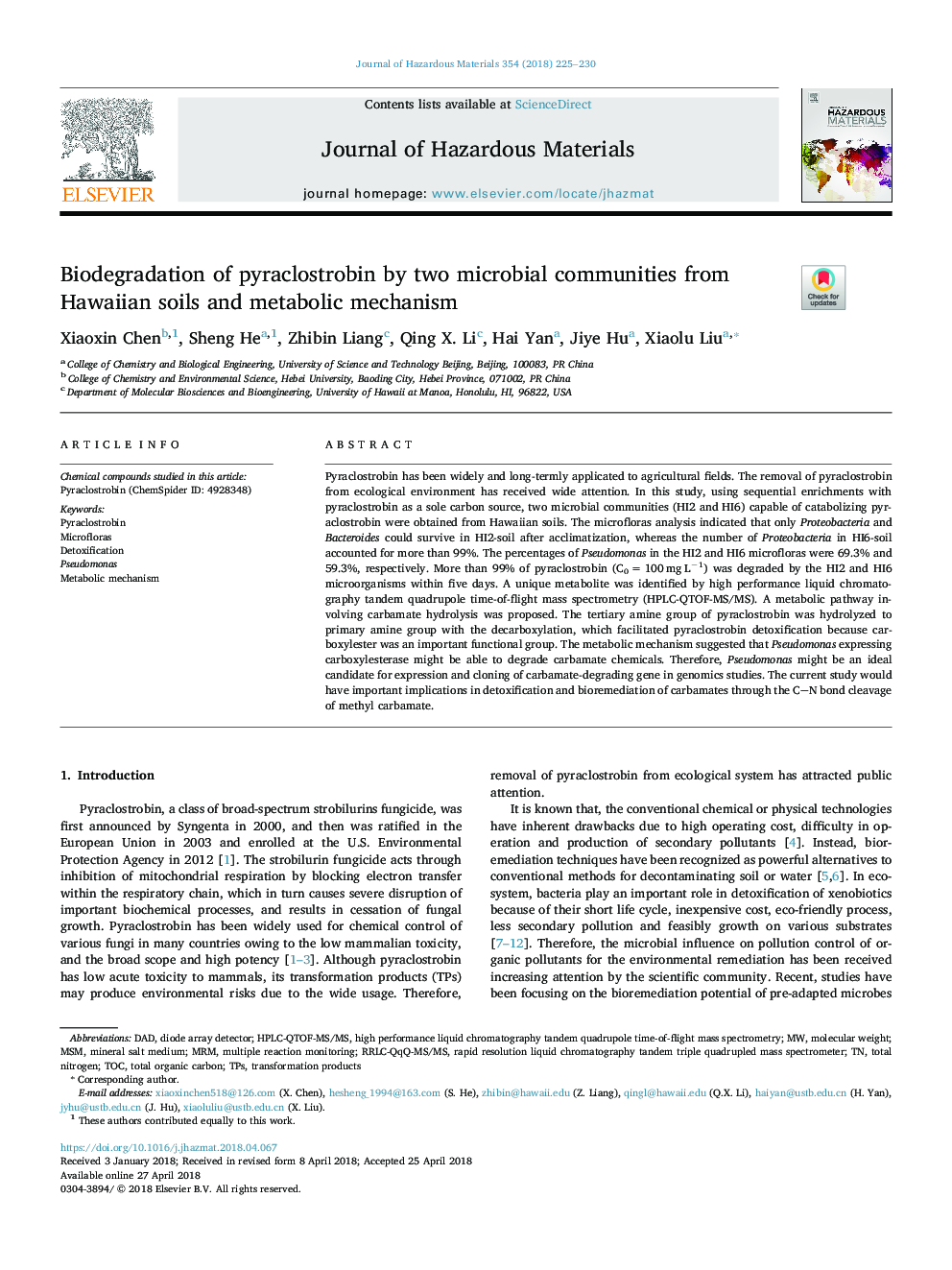| کد مقاله | کد نشریه | سال انتشار | مقاله انگلیسی | نسخه تمام متن |
|---|---|---|---|---|
| 6968405 | 1453009 | 2018 | 6 صفحه PDF | دانلود رایگان |
عنوان انگلیسی مقاله ISI
Biodegradation of pyraclostrobin by two microbial communities from Hawaiian soils and metabolic mechanism
ترجمه فارسی عنوان
تجزیه زیستی پریکلولستروبین توسط دو جوامع میکروبی از خاک های هاوایی و مکانیسم متابولیکی
دانلود مقاله + سفارش ترجمه
دانلود مقاله ISI انگلیسی
رایگان برای ایرانیان
کلمات کلیدی
MRMRRLC-QqQ-MS/MSMetabolic mechanismHPLC-QTOF-MS/MSMSMTPsDADTOCdiode array detector - آشکارساز آرایه دیودDetoxification - سم زداییPseudomonas - سودوموناTransformation products - محصولات ترانسفورماتورmineral salt medium - مواد معدنی نمک متوسطmultiple reaction monitoring - نظارت چندگانه چندگانهtotal nitrogen - نیتروژن کاملMolecular weight - وزن مولکولیPyraclostrobin - پری کلستروبینTotal organic carbon - کل کربن آلی
موضوعات مرتبط
مهندسی و علوم پایه
مهندسی شیمی
بهداشت و امنیت شیمی
چکیده انگلیسی
Pyraclostrobin has been widely and long-termly applicated to agricultural fields. The removal of pyraclostrobin from ecological environment has received wide attention. In this study, using sequential enrichments with pyraclostrobin as a sole carbon source, two microbial communities (HI2 and HI6) capable of catabolizing pyraclostrobin were obtained from Hawaiian soils. The microfloras analysis indicated that only Proteobacteria and Bacteroides could survive in HI2-soil after acclimatization, whereas the number of Proteobacteria in HI6-soil accounted for more than 99%. The percentages of Pseudomonas in the HI2 and HI6 microfloras were 69.3% and 59.3%, respectively. More than 99% of pyraclostrobin (C0â¯=â¯100â¯mgâ¯Lâ1) was degraded by the HI2 and HI6 microorganisms within five days. A unique metabolite was identified by high performance liquid chromatography tandem quadrupole time-of-flight mass spectrometry (HPLC-QTOF-MS/MS). A metabolic pathway involving carbamate hydrolysis was proposed. The tertiary amine group of pyraclostrobin was hydrolyzed to primary amine group with the decarboxylation, which facilitated pyraclostrobin detoxification because carboxylester was an important functional group. The metabolic mechanism suggested that Pseudomonas expressing carboxylesterase might be able to degrade carbamate chemicals. Therefore, Pseudomonas might be an ideal candidate for expression and cloning of carbamate-degrading gene in genomics studies. The current study would have important implications in detoxification and bioremediation of carbamates through the CN bond cleavage of methyl carbamate.
ناشر
Database: Elsevier - ScienceDirect (ساینس دایرکت)
Journal: Journal of Hazardous Materials - Volume 354, 15 July 2018, Pages 225-230
Journal: Journal of Hazardous Materials - Volume 354, 15 July 2018, Pages 225-230
نویسندگان
Xiaoxin Chen, Sheng He, Zhibin Liang, Qing X. Li, Hai Yan, Jiye Hu, Xiaolu Liu,
